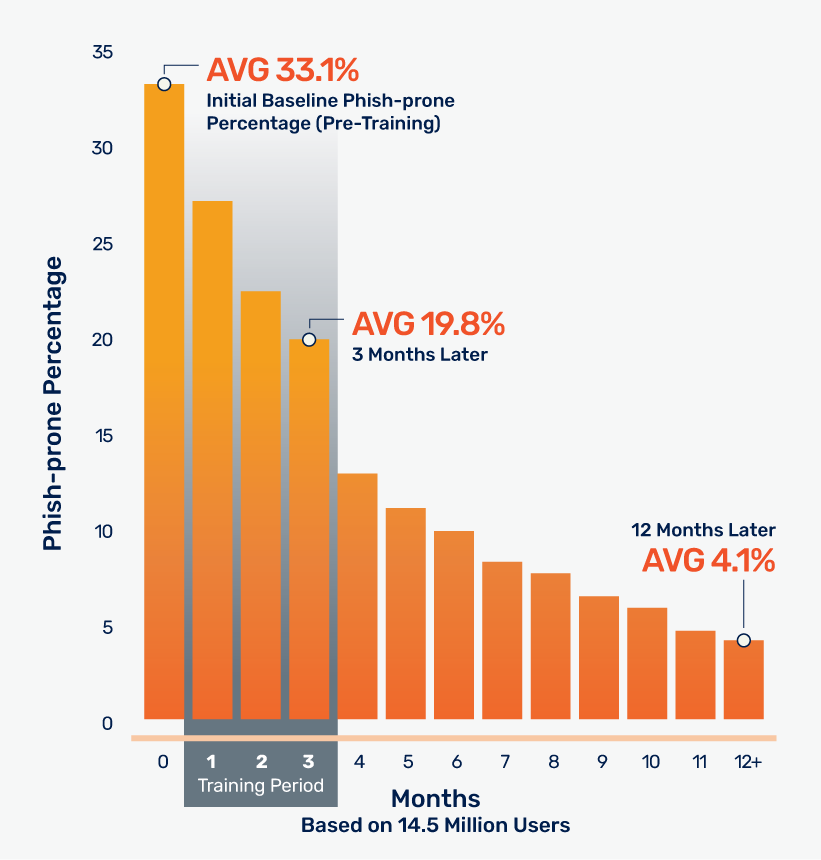Executive Takeaways
TABLE OF CONTENTS
Executive Takeaways
The Power of AI
Across all geographical regions, AI-powered social engineering and phishing attacks represent the biggest cybersecurity threat targeting employees, demanding more personalized, relevant and adaptive SAT.
Every Organization is at Serious Risk Without Security Awareness Training
With an average industry baseline PPP of 33.1%, a third of an organization’s workforce is exposed to social engineering and phishing attacks.
Security Awareness Training Changes Behavior and Reduces Risk in as Little as Three Months
Just 90 days of SAT can reduce your organization’s PPP by over 40%; 12 months of training reduces it by 86% to just 4.1%.
Keys to Success
To favorably change security behaviors and reduce risk, a security awareness training program must have:
- Clearly defined and communicated mandates
- Strong alignment with organizational security policies and threats
- An active connection to overall security culture
- Full executive support
Security Awareness Training is the Foundation for a Successful Human Risk Management Strategy
Human risk management represents the next phase in the evolution of employee education and engagement. HRM takes a data-driven approach to assessing individual risk by analyzing everything from phishing tests and training scores to real-world security incidents and behavioral trends. Leveraging this data, organizations can deliver highly relevant and personalized SAT and adaptive security controls to positively influence security decision making at the point of risk.
